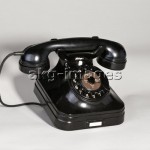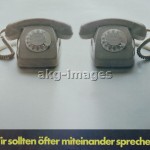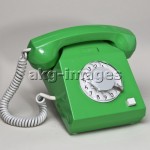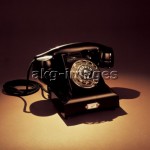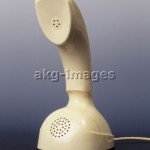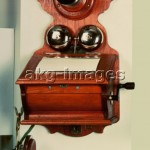Dialling up the past
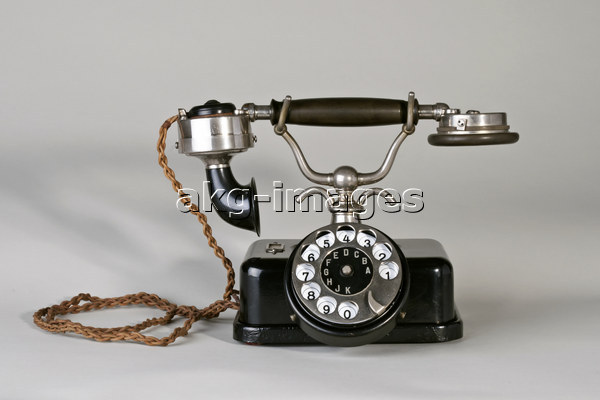
(This blog post has been translated from the German original which you can read here.)
Telephones… they never used to interest me, except when I wanted to call someone and, of course, as a child had to ask my parents’ permission. The green machine in our hallway was later replaced with a burgundy one with push buttons which had been illegally connected by an acquaintance, as phones with push buttons cost more to rent. There would have been trouble if the post office, which managed the telephone system at the time, had ever found out…
My grandma had a black phone with a cradle which she was not allowed to take with her when she moved into a new apartment. The device was certainly scrapped. It was the 1980s, Volksempfänger radios were being dumped, and by the 1970s and 1980s old buildings that had survived the war were being torn down.
When, in 1995, I thought about my grandma’s phone again, she had already been dead for six years. The postal monopoly was over and Deutsche Telekom’s responsibilties ended at the phone jack, You could buy your own telephone and sell it on, too, if you wanted, for example at a flea market which is where I bought my first Bakelite telephone, a “W49”, for 12 Marks.
The next weekend I was able to acquire two East German Bakelite phones really cheaply. These ones had glass bells because metal was so scarce after the war. So, I already had a collection of three phones. Today I have about 70 lying dormant in the basement in boxes, without a single duplicate machine among them, at least not if you’re a connoisseur. To the uninitiated eye, they are almost all black with a dial, so you might think they are “all the same”… even if the “Weltruf” model from Mix & Genest doesn’t even begin to resemble a “ZBSA24”.
I am sure there are more radio collectors than there are telephone collectors. You can’t just turn a phone off and on when you want it and leave it be at other times, you use it when you need it and you wait for someone to call you, each phone with its own distinctive ring, some brighter, some darker, some with a delicate metal ringing sound, others with a glass rattle. It connects. Just like stamps or coins, there are also special colours that make a device then incredibly rare and sometimes valuable.
One of my most beautiful models is the “ZBSA08”, which is the main image in this post, a phone that was built from 1908 onwards. It did not have a dial as you were connected directly to the telephone exchange. Around about 1929, the devices were then rebuilt and provided with a superior rotary dial, so you that you were able to contact someone in the local area directly yourself. There was no such thing as planned obsolescence: rebuilt in 1929, the device still works today!
From the 1930s to the 1970s German telephone users were told to “Keep it short” when on the phone. That progressed into a more relaxed “Just give me a call”. Now we’re seeing the telephone progressing from being a physical object to a computer programme.
